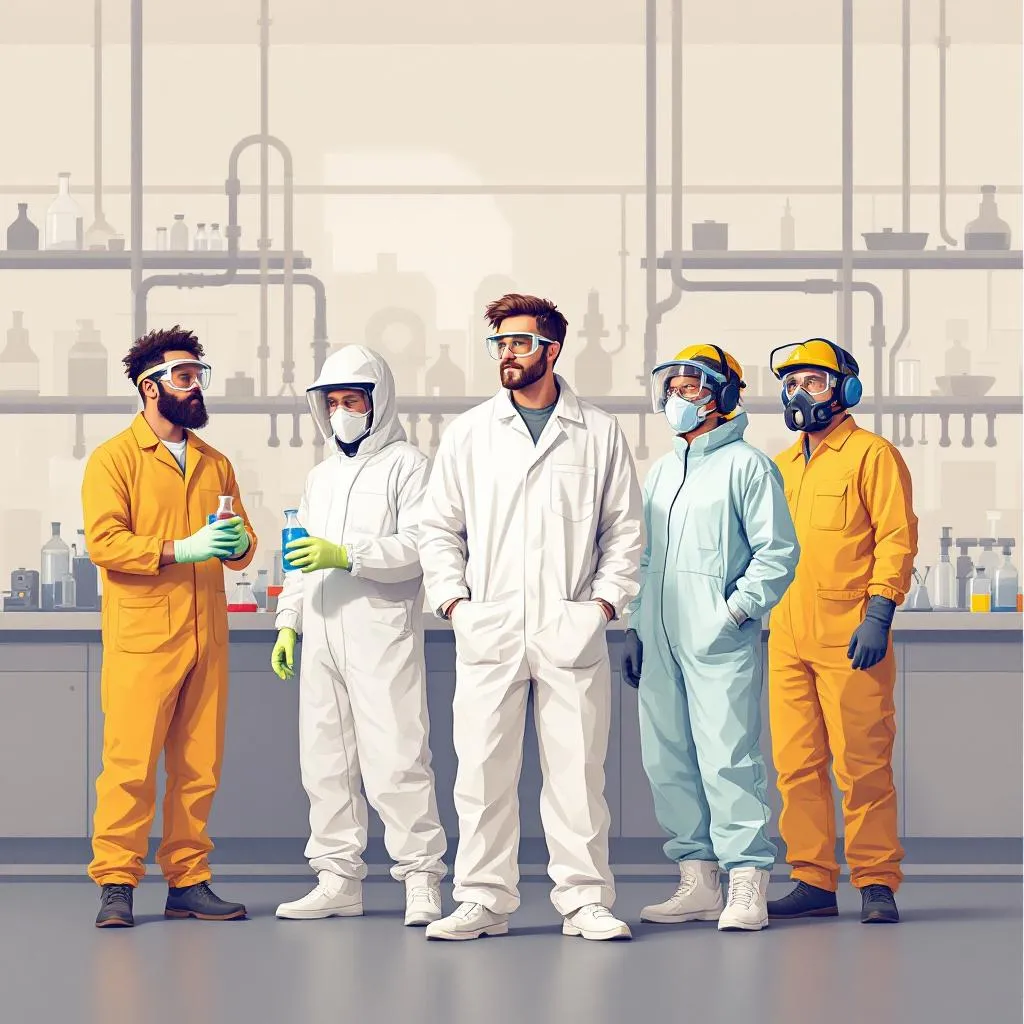How to Choose the Best PPE for Your Type of Laboratory Work

In laboratory environments, safety is paramount. Each day, researchers and lab personnel face exposure to various hazards, from chemicals and biological agents to physical threats. Choosing the right Personal Protective Equipment (PPE) is not merely a precaution; it is a necessity for ensuring safety and compliance in any lab setting. In this article, readers will learn how to select the appropriate PPE tailored specifically to their laboratory work, ensuring a safer work experience.
Table of Contents
- Understanding PPE
- Identifying Your Lab Hazards
- Types of PPE Available
- How to Select the Right PPE
- Maintaining and Caring for PPE
- Conclusion
Understanding PPE
Personal Protective Equipment (PPE) refers to any device or garment designed to protect the wearer from exposure to hazardous materials or environments. It serves as the last line of defense against potential hazards in the laboratory.According to the Occupational Safety and Health Administration (OSHA), it is essential for workers to understand how to choose and use PPE correctly to minimize risks in the workplace.
Identifying Your Lab Hazards
Before selecting PPE, it is crucial to identify the specific hazards present in your laboratory. Common lab hazards may include:
- Chemical Hazards: Exposure to toxic, corrosive or irritant substances.
- Biological Hazards: Risks involving bacteria, viruses, and other microorganisms.
- Physical Hazards: Such as noise, heat, and machinery risks.
- Radiological Hazards: Exposure to ionizing radiation in certain laboratory settings.
Assessing the potential risks allows lab managers to determine what level of protection is necessary for staff safety.
Types of PPE Available
The following categories of PPE should be considered based on the identified hazards:
- Eye and Face Protection: Safety goggles and face shields protect against chemical splashes and impacts.
- Skin Protection: Gloves made of appropriate materials (latex, nitrile, or rubber) based on the substances handled.
- Body Protection: Lab coats and coveralls that prevent skin exposure to dangerous agents.
- Respiratory Protection: Masks or respirators necessary for environments with vapors, fumes, or dust.
- Foot Protection: Closed-toe shoes or safety boots displayed to mitigate foot injuries.
CP Lab Safety offers a variety of high-quality PPE products, ensuring compliance with safety standards while promoting worker welfare in laboratory settings.
How to Select the Right PPE
Selecting the right PPE involves evaluating various factors:
- Hazard Assessment: Utilize a risk assessment to understand the specific requirements. Use CDC guidelines for a thorough hazard assessment.
- Fit and Comfort: Ensure PPE fits well and is comfortable to wear for extended periods. Ill-fitting equipment may hinder work performance and safety.
- Standards and Certifications: Look for PPE that complies with relevant standards such as ASTM or ANSI to ensure quality and effectiveness.
- Training and Usage: Ensure that users are adequately trained in wearing and maintaining PPE. This includes understanding when to replace PPE and how to do so safely.
By carefully considering these factors, laboratory personnel can select the appropriate PPE that will significantly reduce risks associated with their specific tasks.
Maintaining and Caring for PPE
The effectiveness of PPE is highly dependent on proper usage and maintenance. Here are tips for ensuring longevity and performance:
- Regular Inspection: Routinely check PPE for signs of wear and tear, replacing them as needed.
- Proper Cleaning: Follow the manufacturer's instructions for cleaning and disinfecting PPE to avoid any contamination risks.
- Safe Storage: Store PPE in a clean, dry place to prevent deterioration and contamination.
- Training Refreshers: Conduct periodic training sessions on proper use and care for PPE to maintain safety awareness.
Conclusion
Choosing the best PPE for your specific laboratory work is not an arbitrary decision; it involves a thorough understanding of the potential hazards and an assessment of appropriate safety measures. By identifying hazards, selecting the right protective equipment, and committing to its proper maintenance, laboratory personnel can significantly reduce risks in their work environment.
If you're in need of high-quality PPE supplies, look no further than CP Lab Safety. As a woman-owned small business based in California, we prioritize your safety with our comprehensive range of PPE products, laboratory equipment, and bulk chemicals. Explore our selection today and take the first step toward safer laboratory practices!
Recent Posts
-
Safety First: Choosing the Right PPE for Your Laboratory
Are you aware that over 20,000 workplace injuries occur annually i …1st Oct 2025 -
The Future of Lab Supplies: Trends You Can't Ignore
As laboratories across various industries evolve, the demand for i …29th Sep 2025 -
Ergonomics in the Lab: Choosing Equipment for Comfort
In the fast-paced world of laboratory work, comfort should not be …15th Sep 2025
